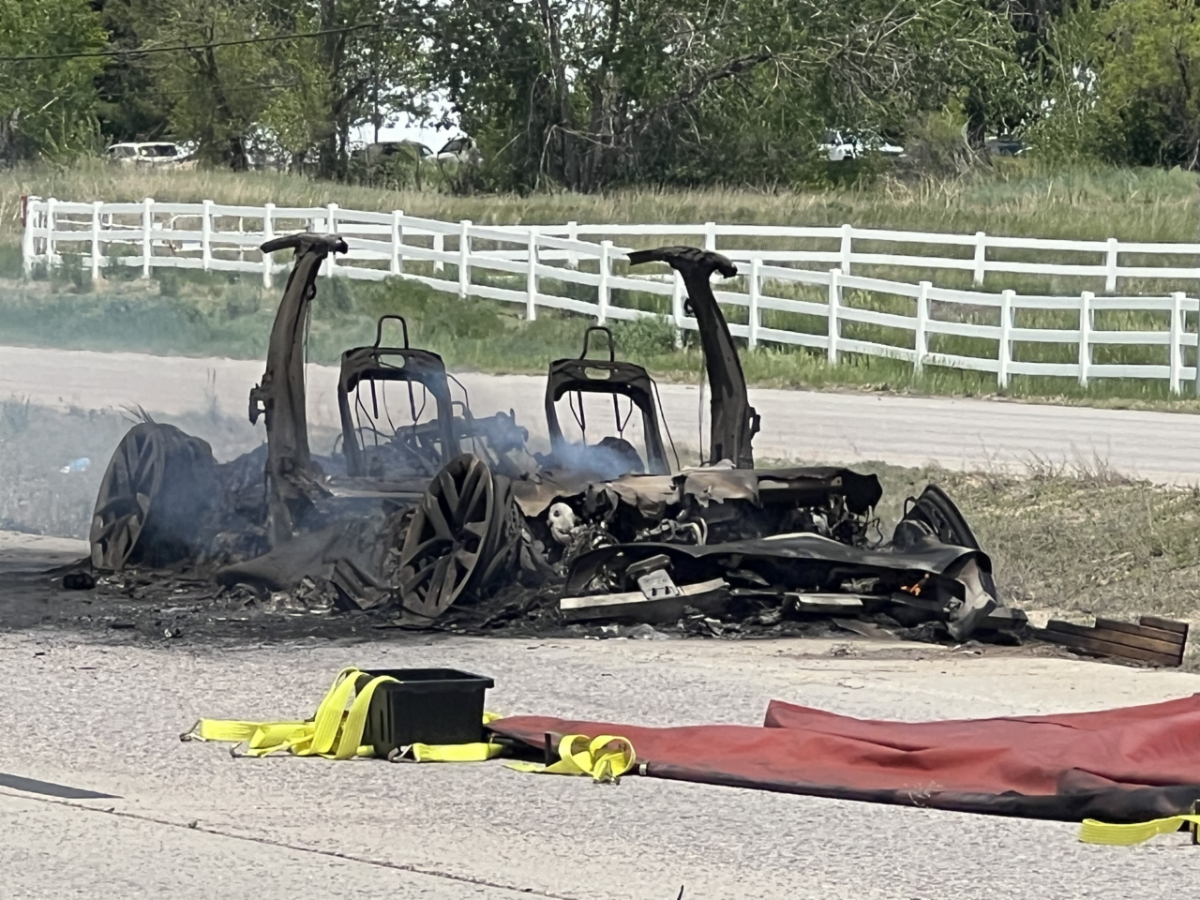Lithium-Ion Battery Fires
THIS YEAR'S FIRE PREVENTION WEEK THEME: “Charge into Fire Safety™: Lithium-Ion Batteries in Your Home.”
Fire Prevention week is the longest running public health campaign in the United States.
Since 1922, Fire Prevention Week has been observed nationwide as a way to raise awareness about fire safety. Each year during Fire Prevention Week, firefighters, teachers, and families work together to share important lessons that can save lives by preventing fires and reducing fire-related injuries.
The week is recognized annually in October, during the week of October 9th, in remembrance of the Great Chicago Fire of 1871. That tragic event began on October 8 and claimed more than 250 lives, left 100,000 people homeless, destroyed over 17,000 buildings, and burned more than 2,000 acres of land. Fire Prevention Week serves as a reminder of the importance of fire safety and the role each of us plays in protecting our homes, schools, and communities.
Lithium-ion batteries store a large amount of energy in a small amount of space. This makes them powerful, portable, and versatile, which is why you find them in many rechargeable devices that you use every day. Cars, smartphones, tablets, power and lawn tools, laptops, e-cigarettes, headphones, and toys, to name just a few — may be powered by lithium-ion batteries.
If damaged or not used correctly, lithium-ion batteries can overheat, start a fire, or even explode. To reduce these risks, South Metro Fire Rescue encourages all residents to be informed about their devices and follow the Buy, Charge, and Recycle Safely approach to all lithium-ion battery powered items.
BUY ONLY LISTED PRODUCTS
.png?ixlib=rb-1.1.0&w=2000&h=2000&fit=max&or=0&s=a71ecb7adbe135440ee7c9066cde7fc8)
When buying a product that uses a lithium-ion battery, take time to research it. Look for a stamp from a nationally recognized testing lab on the packaging and product, which means that it meets important safety standards.
CLICK HERE to learn about how to research your products' safety certifications
CHARGE DEVICES SAFELY
Stop charging the device immediately if you notice a change in color or shape, an odor, heat, leaking, or odd noises. Move the device away from anything flammable (such as outside on the driveway or sidewalk ) if possible to do so safely. Call 9-1-1 if you notice any smoke or flames.
Watch this video and learn why safe charging is so important for lithium-ion battery powered devices:
Always use the cords that came with the product to charge it. Follow the instructions from the manufacturer. If you need a new charger, buy one from the manufacturer or one that the manufacturer has approved.
.png?ixlib=rb-1.1.0&w=2000&h=2000&fit=max&or=0&s=72869b1295ca3f224164f5433f16dc51)
Charge your device on a hard surface. Don’t charge it under a pillow, on a bed, or on a couch. This could cause a fire. Don’t overcharge your device. Unplug it or remove the battery when it’s fully charged.
.png?ixlib=rb-1.1.0&w=2000&h=2000&fit=max&or=0&s=e491280115dcac1a8239274d43c6b710)
RECYCLE BATTERIES RESPONSIBLY
Don’t throw lithium-ion batteries in the trash or regular recycling bins because they could catch fire. Recycling your device or battery at a safe battery recycling location is the best option for disposal.
.png?ixlib=rb-1.1.0&w=2000&h=2000&fit=max&or=0&s=2196d30bd33f55a1fc6c26ca5734a123)
South Metro has responded to countless trash fires started by improper disposal of lithium-ion batteries in the trash. CLICK HERE to learn how to recycle your batteries responsibly.
Watch South Metro's latest Podcast on Lithium-Ion Battery Safety with Hazmat Team Captain Chris Wells and Community Risk Reduction Specialist Brandi Miller.
Electric Vehicle (EV) Fires
Even if you don't own or drive an electric vehicle (EV), there are commercial and public transit EVs throughout the community, and they are only growing in popularity.
The Hydrogen Fluoride gasses emitted from lithium-ion battery fires are extremely toxic.
If you witness a lithium-ion battery fire, keep away from the scene and call 9-1-1.
How does South Metro fight an EV fire?
When firefighters apply water on electric vehicle (EV) fires, it can increase hydrogen fluoride toxicity, heightening public safety concerns and potential health risks. To avoid this, firefighters will secure the scene of an actively burning EV by isolating the area and monitoring until it’s done actively burning. Next, firefighters will deploy a single-use car blanket and tow the EV remnants to an impound lot where the car blanket remains in place to help contain re-ignition hazards. Damaged EV batteries are handled as hazardous waste and may be taken to a facility for recycling or disposal if resources allow.


The Power and Danger of Lithium-Ion Batteries for Kids:
TAKE C.H.A.R.G.E of Battery Safety has provided a summary of our lithium-ion battery safety and provides even more information on their website BatteryFireSafety.org.



.png?ixlib=rb-1.1.0&or=0&w=720&h=720&fit=max&auto=format%2Ccompress&s=9c8a9cb4a4ee88cefed907c35e800588)
.png?ixlib=rb-1.1.0&or=0&w=720&h=720&fit=max&auto=format%2Ccompress&s=42d858def468feb093af14ce41370c50)
.jpg?ixlib=rb-1.1.0&or=0&w=720&h=720&fit=max&auto=format%2Ccompress&s=80ea457f68e0ab8611327fc9c9106a24)